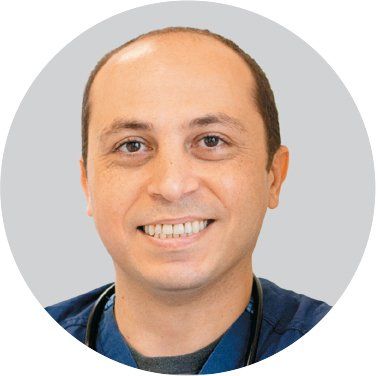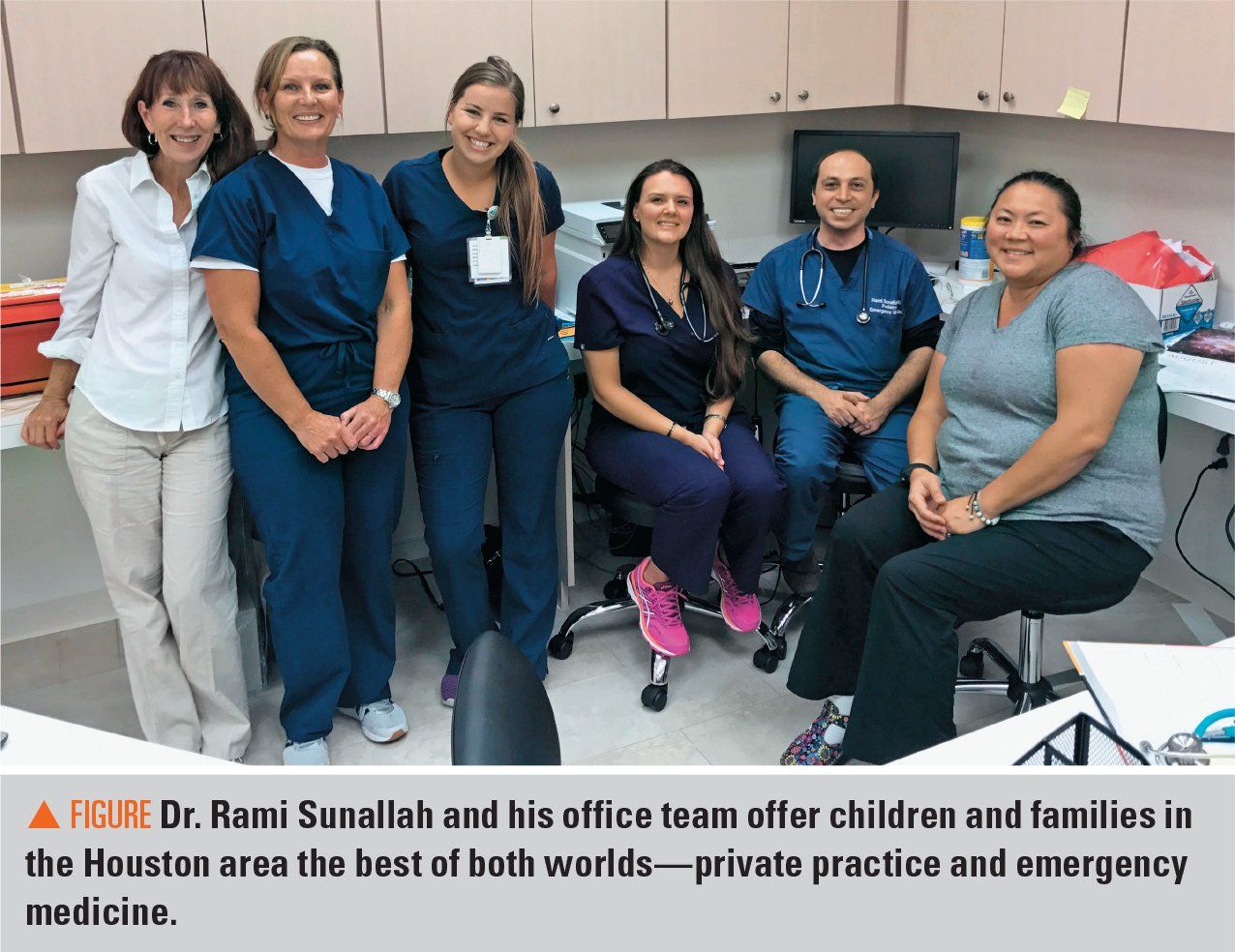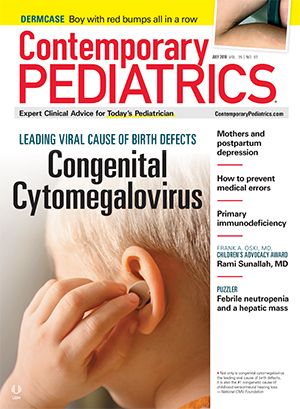Pediatric change makers: Rami Sunallah, MD
Physician brings the lessons of ED medicine to private practice.
Rami Sunallah, MD

Figure

FRANK A. OSKI, MD, CHILDREN’S ADVOCACY AWARD
In honor of our magazine’s founder, Frank A Oski, MD, Contemporary Pediatrics has initiated an annual award for pediatricians who exemplify his tireless advocacy for children. Here is another winner of this year’s award. For more profiles about these amazing pediatric change makers, go to ContemporaryPediatrics.com and search "Oski award."
Rami Sunallah, MD, was working a shift in the pediatric emergency department (ED) at Clear Lake Regional Medical Center near Houston as Hurricane Harvey’s torrential rains pummeled southeast Texas. The late-August 2017 ED shift turned into 4 straight days in the hospital, caring for sick kids during and after the storm.
“I couldn’t go back home because of all the flooding, and there wasn’t anybody who could come and replace me,” he says.
On the fifth day, Sunallah left the hospital and made a quick stop to check on his newly opened private practice in League City, a Houston suburb where Sunallah, his wife, and 2 young children live. Unlike many of the nearby homes and businesses, his practice had only minor flooding. Although Sunallah’s wife was concerned that the water from flooded streets was about to enter their home during the storm, the family’s home also escaped Harvey’s wet wrath.
The sleep-deprived pediatrician checked on his family and his staff, and everybody was all right. However, when he looked around in his community, he saw that most weren’t as fortunate. Even medical centers had closed down, leaving many patients, including children and their families, scrambling to find medical care.
On the sixth day post-Harvey landfall, Sunallah and his staff decided to open the practice and offer care to anyone who needed it, free of charge.
“We basically posted a message on Facebook that whoever needs care, we’re open from 10 am to 6 pm, or until we’re done,” he says. “We didn’t charge them, and they didn’t have to be our patients to be seen. It was just basically to make sure everybody could be taken care of.”
By 9 am that morning, families were waiting at Sunallah’s practice. The pediatrician had arranged access to a military vehicle that could get through the flooded streets, to transport patients who needed to be hospitalized.
“We ended up transporting a couple of kids that needed to go to the hospital,” Sunallah says, “and we saw about 50 families, each with 2 or 3 kids. These are families that didn’t have any medical access for about 4 or 5 days, if not more.”
Sunallah says he and his staff saw the spectrum of maladies that day-from children with seizures who had gone without care, to skin infections, pneumonia, ear infections and more. “Honestly, I was happy with my team. They did an impressive job and everybody, at the end of the day, felt good about it,” he says.
Comfortable with really sick kids
Sunallah was well suited for the hectic schedule, triaging, and emergency care he had to provide that day.
After completing a pediatric residency at the University of Toledo, Ohio, Sunallah did a 3-year fellowship in pediatric emergency medicine at the University of Alabama at Birmingham. He completed his fellowship in 2015 and moved with his family to the Houston area, to be near his parents.
Sunallah says he thrives working in the pediatric ED, but, at age 40, doesn’t envision doing that his whole career. “I love the ED-I’m comfortable dealing with sick kids-but it’s not bad having a healthy kid every now and then,” he says.
So, in 2017, he opened a practice aimed at offering children and families the best of both worlds-private practice and emergency medicine.
One example: Sunallah’s work in private practice focuses on controlling patients’ pain with tricks and tactics he learned to manage patients’ pain in the ED.
“Studies show that not a lot of EDs pay enough attention to kids’ pain," he says. “We do tricks basically, some kind of distraction. We make sure that whatever we’re doing-whether we give them a shot or sutures, or what-not-we take care of the pain first, and then go forward.”
Among the distractions: ShotBlockers (Bionix; Toledo, Ohio) help dull injection-site pain when children have shots, and iPads always are a great distraction for children, according to Sunallah. “Let them play a game or watch a YouTube video. Once they’re into the game, you can do whatever you want to them, and they won’t notice,” he says.
Focus on avoiding the ED
Sunallah also focuses on helping children and families avoid going to the ED. He says children who often go to EDs or urgent-care centers because of chronic medical conditions suffer from a lack of a continuum of care.
“Kids will actually get sicker because nobody is providing the primary care to take care of them,” he says. “Instead of saying “Here’s your medicine and good luck,” we [take care of them after the urgent visit].”
His ability to keep kids out of the ED when possible goes back to his training. “As an ED doc, when sick kids come to me in the clinic, it gives me an extra push with what we need to do. For example, I do my own x-rays here at the clinic. I have my own full set of labs. Most of the kids I see in the clinic, I take care of myself, unless they need a [computed tomography (CT)] scan,” he says.
If a child needs a CT scan, Sunallah says he’ll send the family to get the scan then follow up to determine if the child needs to be admitted to the hospital or requires surgery, which still avoids the ED. “Why should the family pay an extra ED visit? I tell the hospitalist that I have a kid who needs to be admitted, and the patient goes to the floor rather than the ED,” Sunallah says.
People in the community seem to appreciate Sunallah’s approach. One patient’s mother summed it up on the League City Pediatrics’ Facebook page: “This is the pediatrician's office you always hope that you can find for your children. They listen to your concerns and really talk in depth about possible causes and resolutions. I was blown away by the kindness of everyone there. My boys were thrilled with the play area and even happier when the staff used some nerve confusion techniques to aid with the pain of shots! No tears from shots = happy boys + thrilled mom!”
